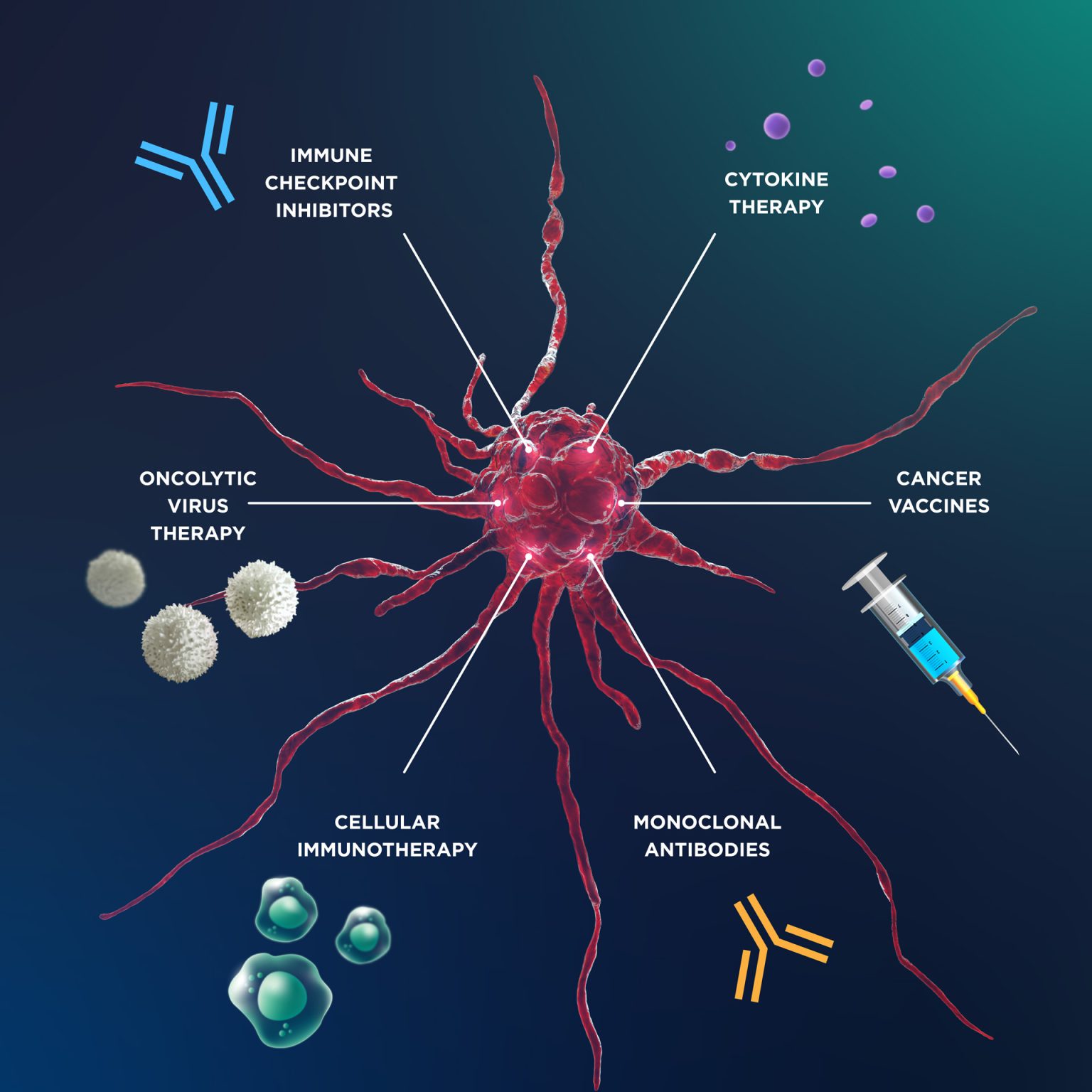
It Doesn’t Attack the Tumor Directly — It Wakes Up the Immune System
Immunotherapy doesn’t enter the tumor with weapons.
It doesn’t try to poison or burn it.
Instead, it reminds the immune system what danger looks like.
Cancer often hides by mimicking normal cells.
That trick confuses the body’s defenses.
Immunotherapy pulls away that disguise.
The immune system already knows how to kill.
But cancer teaches it to ignore.
That silence allows tumors to grow.
Immunotherapy breaks that silence.
It sharpens what was dulled.
And it brings the immune response back online.
Immunotherapy Breaks That Silence
There are different types of immunotherapy drugs.
Some are antibodies.
Others are vaccines or cellular treatments.
Each works in a slightly different way.
But all aim to increase recognition of cancer.
And to restore the body’s natural attack process.
Checkpoint inhibitors are the most common.
They remove brakes from immune cells.
Normally, these brakes prevent overreactions.
But cancer abuses them.
It tells T-cells to stop attacking.
Checkpoint inhibitors remove that block.
Checkpoint Inhibitors Remove That Block
Another option is CAR T-cell therapy.
This involves engineering your own immune cells.
Doctors remove your T-cells, modify them, and return them.
These edited cells now target a specific cancer marker.
It’s highly personalized.
And often used for blood cancers.
Cytokine therapy uses signaling proteins.
These proteins amplify immune activity.
They increase awareness inside the immune system.
So cells locate and destroy more cancer.
It’s a more general approach.
But useful when broader stimulation is needed.
These Edited Cells Now Target a Specific Cancer Marker
Cancer vaccines train the immune system like flu vaccines do.
They introduce small pieces of tumor DNA.
This shows the body what to target.
The goal isn’t prevention—it’s correction.
They aim to produce a focused immune memory.
Which may help prevent recurrence.
Monoclonal antibodies attach to specific proteins on cancer cells.
They flag the cell for immune destruction.
Some carry chemotherapy directly to the tumor.
Others simply help the immune system notice the threat.
They’re not standalone cures.
But they increase immune precision.
They Help the Immune System Notice the Threat
Side effects exist, but they differ from chemotherapy.
Fatigue is still common.
So are fever, chills, joint pain.
Some patients experience skin rashes.
Others develop inflammation in the lungs or intestines.
These come from increased immune activity—not toxicity.
Doctors monitor bloodwork closely during immunotherapy.
They check for overactivation signs.
Autoimmune reactions are rare, but possible.
Because boosting the immune system changes balance.
Too much stimulation causes it to attack healthy tissue.
That risk requires constant observation.
Boosting the Immune System Changes Balance
Not all cancers respond to immunotherapy.
Success depends on how visible the tumor is.
Some cancers hide too well.
Or don’t produce enough of a target.
Others adapt quickly and escape detection again.
So not every attempt works.
Some patients show no results for weeks.
Then suddenly tumors shrink.
Others stabilize without shrinking.
In some cases, there’s no effect at all.
That doesn’t mean failure—just mismatch.
Trial and response shape the plan.
Trial and Response Shape the Plan
Immunotherapy is often used with other treatments.
Chemotherapy, radiation, targeted drugs.
The goal is layered pressure on the cancer.
Each method weakens a different survival tool.
Together, they reduce cancer’s options.
And increase the chance of control.
Duration varies.
Some treatments last months.
Others become long-term maintenance.
If response is good, therapy may continue.
If side effects grow, plans shift.
It’s rarely a straight line.
It’s Rarely a Straight Line
Scans and labs guide decisions.
Doctors look for tumor shrinkage.
Or slowed progression.
No growth is considered progress.
Complete response isn’t always the goal.
Sometimes holding the line is enough.
Immunotherapy doesn’t work by force.
It works by reminder.
It doesn’t create destruction—it allows recognition.
The fight was always there.
It just needed a reason to begin.
And a clearer target to aim for.
